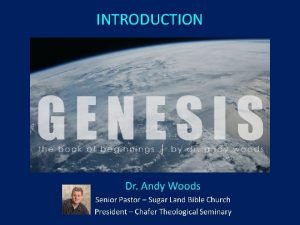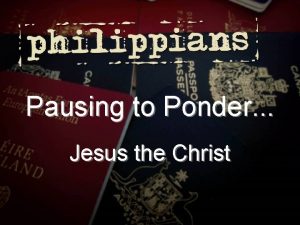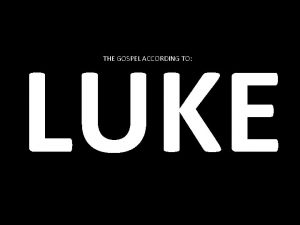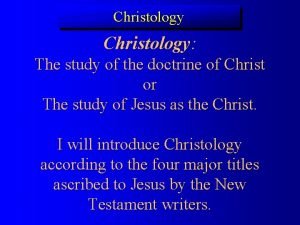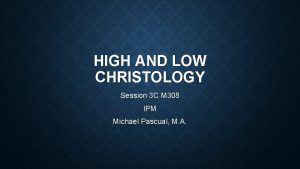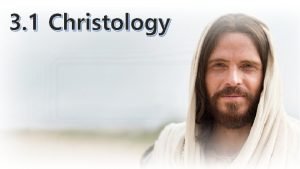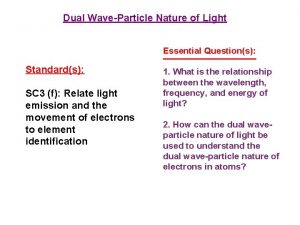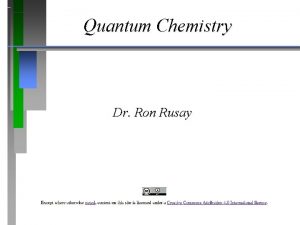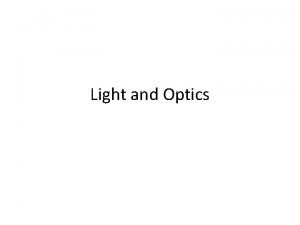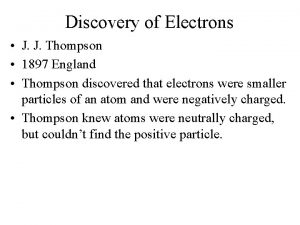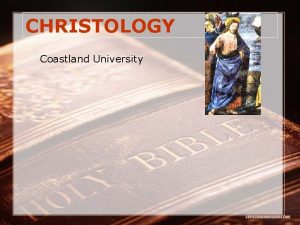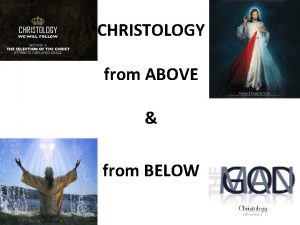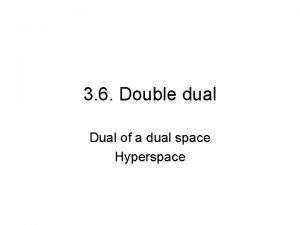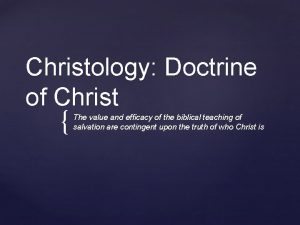Christology The Dual Nature of Christ Introductory Matters












- Slides: 12

Christology The Dual Nature of Christ

Introductory Matters • No person is under constant attack than the Person of Jesus Christ. • Even when he was on this earth, Jesus was accused, mocked, scorned and killed for what he said. • Today is no different, Jesus has consistently been attacked by our culture.

Two Natures, One Person? • As Christians, we believe Jesus is both man & God at the same time. • 100% Man and 100% God. • But how is this possible? ▫ There have been multiple controversies surrounding the Dual Nature of Christ throughout Church History

Christological Controveries • Arian Controversy ▫ Arius believed Christ was begotten or made by God, and thus was not God in the flesh. ▫ Homoiousios = like essence ▫ Homoousios = same essence ▫ Arius argued for the first term rather than the second. Athanasius argued for the second. ▫ Council of Nicea in 325 A. D. confirmed Athanasius teaching and condemned Arius as a heretic.

Christological Controversies • Monophysite heresy ▫ Brought about by Eutyches ▫ Mono = one, physis = nature ▫ Monophysites believed Christ only had one nature, not two and this nature was a mixture of divine and human.

Christological Controversies • Nestorianism ▫ Nestorius ▫ This Controversy posed that if Christ had two natures then he must have two distinct personalities. Therefore, he would have two persons, not one. ▫ They affirmed two natures, but these natures were not unified.

Christological Controversies • Apollinarisim ▫ Apollinaris of Laodicea. ▫ He proposed that Christ had a human body, but a divine mind. ▫ Summary: Christ had a divine nature, an imperfect body, and his mind was “replaced” by the Logos

Christological Controversies • Docetism ▫ Docetism posed that Christ was only divine and only “seemed” or “appeared” to be human. ▫ This was an offshoot of Platonic ideals (Matter = bad, Spirit = good) and a mixture of Gnosticism.

Council of Chalcedon • At the Council of Chalcedon, they affirmed the dual nature of Christ ▫ Vera homo = Truly man ▫ Vera Deus = Truly God ▫ The Confession �Christ is truly God and truly human and these two natures are perfectly united with no mixture, confusion, separation or division

Ligonier Christology Statement • Ligonier Christological Statement

The Deity of Christ • Attributes of Deity Seen in Jesus ▫ Omnipotence – Jesus had authority over all things ▫ Omniscience – Jesus knew people’s thoughts (Mark 2); knew who was going to betray him (John 6: 64); and knew people’s background ▫ Immortality – Although Jesus’ human nature can die, his divine cannot. Thus he has the authority to raise it up. ▫ Sovereignty – Jesus is supreme ▫ Worthy of worship – Only God is worthy of worship

The Kenosis Theory • Phil. 2: 5 -8 • “Made himself nothing. ” Some translations have “emptied himself” • In the 19 th Century some scholars believed this meant that Jesus gave up the divine attributes. • But this theory ultimately gives us a Jesus who is less than fully God. • This view is ultimately rejected as unorthodox thinking.
